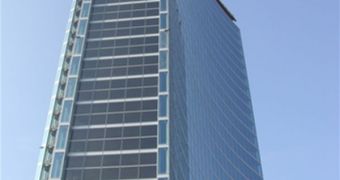As the world is struggling to shift from a coal-dominated present, renewable alternatives enjoy their time of glory. Experts are scaling up efforts to introduce competitive options providing eco-friendly power: from standard PV arrays, to solar paint, 3D panels and black silicon.
However, there is still room for improvements and SAF-GLAS is taking advantage of the ever-growing popularity of green solutions to launch its line of windows that generate clean solar power, SierraClub informs.
The Florida-based eco-conscious company has recently presented its innovative generation of EnergyGlass windows, acting like solar farms without ruining the aesthetic side of our homes.
Even if it counts as a powerful, unconventional energy generator working 24 hours a day in our favor, only an expert could notice the difference between EnergyGlass and a traditional window.
The prototype relies on inorganic nanoparticles, added to a laminated glass surface. PV glass combines the advantages of disaster-proof glass, very useful in crisis situations, like fires, bomb attacks and natural disasters, with the advantages revealed by a new generation of materials, like poly vinyl butyral.
“To achieve and ensure this excellent results in BiPV, EnergyGlassTM uses for the production of its PV glasses, innovative layering materials, such as PVB Solar (poly vinyl butyral) typically used to stratify the safety glass commonly used in construction, and redesigned specifically for solar applications,” reveal officials from the company.
The windows can harness sunlight and turn it into energy in no time. Moreover, due to a backup battery system, the amount of energy can be stored for later usage, proving its utility in energy shortages.
At the same time, they can be modeled into different shapes and sizes, unlike solar panels which, despite their obvious utility, compromise the aesthetics of our homes.
The main disadvantage is that the new line of windows is less efficient than the PV arrays, when it comes to the amount of energy delivered on a daily basis.
“The glass only features thin strips of monocrystalline cells, located around the edge of the laminated glass panel,” notes SAF-GLAS owner, Patrick Smith. Even so, users will still be able to commercialize the power excess by redirecting it to the grid.
Plus, according to its developers, while benefiting from incentives, approximately 70% costs triggered by the installation of the revolutionary windows can be recouped.
Nevertheless, EnergyGlass counts as a big step in making our household truly energy-efficient. Homeowners will be able to welcome this solar-powered innovation in a few months.

 14 DAY TRIAL //
14 DAY TRIAL //